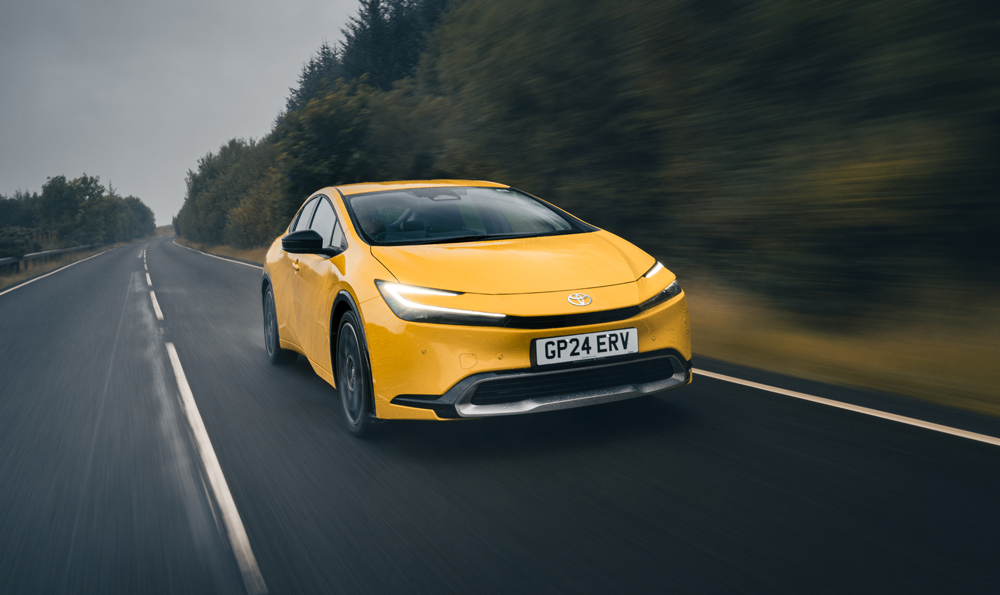
Toyota
Prius
The Toyota Prius was a landmark model billed as the first mass produced electrified passenger vehicle when it launched back in the late 90s. Now in its fifth generation, it has gone from strength to strength over the years.
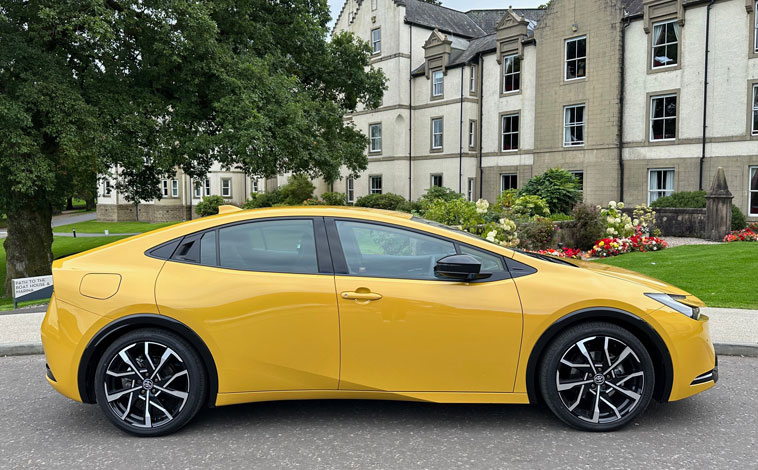

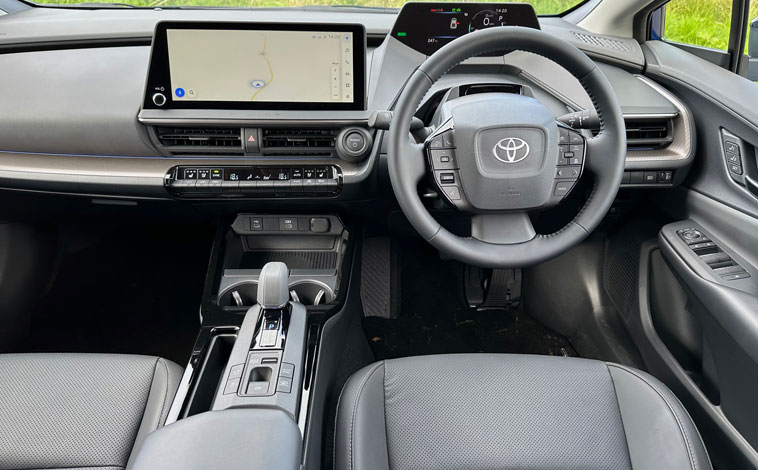
The good
Bold new look and great to driveThe bad
Quite pricey these daysTech Specs
Test Drive
Toyota Prius Fifth Generation – First Drive (2024)
The Toyota Prius needs no introduction having graced our roads for more than a quarter of a century with in excess of five million global sales to date.
In the UK, it became an instant hit as the world’s first mass-produced electrified vehicle and proved a firm favourite with taxi drivers. But in more recent times, the bubble started to burst with numbers declining quite dramatically, mainly due to so many other efficient Toyota hybrids vying for sales.
So, with just 563 cars sold in 2021, Toyota announced in 2022 that they would not be selling the all-new fifth generation model.
However, after listening to customer feedback and demand, UK bosses have completed a U-turn and announced the fifth-generation Prius is now available to order. It will be in showrooms in the very near future for customer demonstrations and deliveries are expected towards the end of the year.
In the UK and Europe, the new Prius will only be available with plug-in hybrid technology featuring a 2.0-litre engine and 13.6kWh battery. It boasts a new, far more dynamic and streamlined design that is guaranteed to turn heads and is packed with on-board technology.
Customers can choose from two generously-equipped trims called Design and Excel, costing £37,315 and £39,995 respectively. They are both powered by a 2.0-litre plug-in hybrid system that benefits from the fifth generation of Toyota’s hybrid technology.
With 220bhp on tap, the new Prius can complete the 0-62mph dash in just 6.8 seconds and tops out at 109mph (84mph in EV mode). It can be driven in EV-only mode for about 53 miles which is ample for the average daily commute and it boasts the lowest ever carbon emissions figure for a Prius at 12g/km. The combined fuel figure is yet to be announced.
We opted for the high-end Prius Excel for our test drive and it certainly didn’t disappoint. It looks dynamically styled, especially when viewed from its very pointy front end. There are sweeping light clusters, a powered tailgate carrying the PRIUS name in large chrome letters, privacy glass, a gloss black grille surround and 19-inch alloy wheels.
Moving inside, the interior is both modern and clutter-free in its layout and styling with a wealth of on-board tech to explore. Getting comfortable is simple thanks to powered seats with memory settings and these can be heated or ventilated.
Positioned in the centre of the dashboard is a 12.3-inch infotainment screen with full wireless smartphone connectivity via Apple CarPlay and Android Auto, sat nav, DAB radio, a six-speaker sound system, Bluetooth, a voice assistant activated by saying “Hey Toyota” and plenty more besides. There is a smaller screen behind the steering wheel that shows all the vital driving data and a separate panel is where all the climate settings are controlled.
When it comes to performance, this is by far the best Prius model Toyota has ever developed with sharp acceleration out the starting blocks and impressive handling. Thanks to clever packaging, the battery is positioned beneath the rear seats, which results in a lower centre of gravity without impacting upon passenger space at all.
That means the front-wheel drive car can be pushed hard into twisting country lanes with the utmost confidence. The grip is unwavering and there is no sign of body movement either. It will cruise at 70mph on dual carriageways and is agile when manoeuvring through busier town centres.
Drive modes called Eco, Normal, Sport and Custom alter the dynamics and handling of the vehicle with the latter setting giving the option to control the steering, powertrain and air con settings. A ‘B’ mode helps capture extra energy when braking or slowing down and, in addition, there are three levels of regenerative braking to choose from. However, these are tucked away in drop-down menus accessed via steering wheel controls which isn’t ideal.
The coupe-like silhouette of the latest Prius has been created by lowering the height by 50mm, moving the roof peak rearwards and adopting larger diameter tyres. There is a 50mm increase in wheelbase, yet the vehicle’s overall length has been reduced by 46mm. Interior space impresses with plenty of room up front for a couple of six footers to sit comfortably. A further two adults can fit in the back provided the seats are not pushed right back, but a trio of youngsters would be best suited to these seats.
The boot is accessed via a wide-opening tailgate and can accommodate 284 litres of luggage, a capacity that increases significantly with the 60:40 split-folding rear seats dropped flat. Elsewhere there is a glovebox, door bins, a central cubby, a single seat back pocket, charging pad, front and rear cup holders, plus six USB-C ports to keep devices connected on the move.
Factor in the wealth of safety features and driver assistance aids, along with an excellent warranty package that can easily be extended to 10 years or 100,000 miles, and the latest Prius is a very attractive package.
Although it is not expected to sell in vast volumes, it is great that Toyota listened and acted on is loyal customer’s feedback.
Test Drive
Toyota Prius Plug-In Hybrid – first drive (2017)
Toyota is setting the highest possible standards when it comes to plug-in hybrid technology and the latest second generation Prius is a perfect example of all that innovation and pioneering research in one very neat package.
The first Prius Plug-in Hybrid (PHV) was launched in 2012 and whilst the car is very much based on the latest fourth generation Prius model, it does feature a number of exciting features.
The latest Prius PHV looks sportier in its design and boasts plenty of ground-breaking on-board technology, including two world premieres – an EV range-extending solar roof and gas injection heat pump air conditioning.
These world class systems are testament to Toyota’s goal of reducing its whole-fleet carbon emissions by 90 per cent by the year 2050 (from 2010) through the use of hybrid, plug-in hybrid, electric vehicle and fuel cell technologies.
Putting all this latest technology into facts and figures, the new car has an EV range that has more than doubled to beyond 30 miles. It has a dual motor drive system that helps the vehicle achieve improved acceleration with an EV maximum speed of 84mph. In addition charging times have also improved by 65 per cent meaning the vehicle now takes just two hours when using a special charge point or three hours 10 minutes via a standard household plug.
The new-look model is longer, wider and lower than its predecessor. And it’s certainly a head-turner with its powerful front design accentuated by a three-dimensional grille and thin, ultra-compact four-LED headlamp units. The vertical daytime running lights and indicators at the edge of the front wings also reinforce the car’s low, ground-hugging, athletic stance.
There is a double-bubble rear screen, two-tone 15-inch alloys, rear spoiler, plus LED rear light clusters to complete the styling.
Move inside and the Prius PHV features a modern, clear, clutter-free, layered dashboard design with satin chrome trim. There is an eight-inch infotainment screen and PHV-specific dual 4.2-inch multi-information displays. The car has been designed for comfort and in the rear, there are two individual seats which are separated by a central console. Two six foot tall adults can easily sit comfortably in the back even with the front seats pushed right back.
The new Prius PHV is available in two richly-equipped trim levels. There is Business Edition Plus which is expected to account for 70 per cent of sales. It is priced at £34,895 and features Toyota Touch 2 with Go Touchscreen multimedia and navigation system, heated auto-dimming door mirrors, dusk-sensing LED headlights, a colour head-up display, rearview camera, Bluetooth, a six-speaker sound system with DAB radio and heated front seats.
Excel models cost £37,095 and introduce the likes of rain-sensing wipers, intelligent park assist, front and rear parking sensors, a 10-speaker JBL sound system, voice recognition for the multimedia and navigation system plus leather upholstery.
Both models feature Toyota Safety Sense which includes a pre-collision system with pedestrian detection, adaptive cruise control, road sign assist and lane departure alert.
Toyota makes clever use of the space within the car with the large lithium-ion battery stored under the rear load space. As a result, the boot has a capacity of 360 litres which can increase to 1,204 litres with the rear seats dropped flat.
The Prius PHV is the first model to have a Dual Motor Drive System which allows the EV power to be increased by about 83 per cent. This gives the car much more rapid acceleration, improved driving dynamics and an increased EV-driving speed of 84mph. This is achieved thanks to a highly compact one-way gear within the transaxle which allows the hybrid system generator to act as a second electric motor – clever stuff.
But that’s not all as the car has a world first with a gas injection heat pump that powers the air conditioning. It can warm the cabin without starting the engine even when the outside temperatures have dropped to minus 10 degrees C.
Finally there is the solar panel technology. A large solar panel is fitted to the roof to generate electricity to charge the hybrid battery. When the vehicle is parked but not plugged into a charge point, the solar roof charges an intermediate solar battery. In turn, when this is fully charged it delivers an extra boosting charge to the main hybrid battery. When the car is on the move, the solar charging system charges the 12-volt auxiliary battery thus reducing the drain on the hybrid battery’s energy.
Toyota believes this solar panel technology, which costs £1,500 and is available as an optional extra on Business Edition Plus models, can increase the car’s EV driving range by about 400 miles per year in the UK (more in sunnier climates!)
Driving the Prius PHV is a 1.8-litre petrol engine that works in conjunction with the dual motor drive and larger battery pack. The total power output is 120bhp/90kW and the car can reach 62mph from a standing start in 11.1 seconds and has a top speed of 101mph. According to official figures the Prius PHV can achieve 283mpg with carbon emissions of 22g/km. Realistically the mpg would depend on the type of driving that is carried out.
We drove the range-topping Excel model on a testing route comprising busy Barcelona traffic, sweeping country lanes, tough hill climbs and motorways and it certainly impressed. With its lower centre of gravity the car is definitely more engaging to drive than its predecessor with improved driver feedback.
The road-holding was confident and assured and the acceleration both swift and smooth. This did become slightly more difficult when climbing long twisting ascents as the CVT gearbox screamed and spluttered a little. But that aside, the car was beautifully quiet and any wind, road and engine sound was kept at bay by the highly-effective insulation and improved sound proofing measures.
There are four powertrain modes – Hybrid Vehicle, Electric Vehicle, Electric Vehicle City Mode and a new Battery Charge mode. In addition there are three driving modes to choose from called Normal, Power and Eco. It’s fun playing with these set-ups and switching to electric-only adds an injection of power that’s really noticeable even at motorway speeds. It’s also useful to be able to boost the battery power levels on the move as this might prove invaluable if you are planning on driving through a congestion charge zone.
The car goes on sale in the UK on March 1 and Toyota is predicting 43 per cent of sales will be retail with the remaining 57 per cent as fleet.
All in all, the new Prius Plug-in Hybrid is quite a car. It looks fabulous, drives beautifully, is futuristic in its design, is packed with technology and it’s even kind to the planet. On the downside – it’s not cheap to buy even with a £2,500 government plug-in grant to bring costs down a little.
Test Drive
Toyota Prius third generation (2016) – first drive
With more than 3.6 million global sales under its belt the car that began life as Project 21 almost 20 years ago has gone on to be the world leader in hybrid technology.
The car, of course, is the Toyota Prius and the introduction of the all-new fourth generation model, which is priced from £23,295 to £27,450, is likely to see those impressive sales figures continue to rise.
The Toyota design team and engineers have been hard at work creating a completely new look for the car which certainly appears striking from every angle. The front end has a lower bonnet height and the company emblem sits at the same height above the ground as on the sporty GT86 coupe helping to create a wider, more athletic appearance.
There are sweeping headlight clusters leading to a very sleek side profile which rises gradually into the rear spoiler. Then from the back, the Prius looks completely different to the outgoing model with a far more aggressive stance. There are very distinctive signature tail lights with sharp, upright and angular lines and very few smooth or rounded curves to speak of.
Step inside and the Prius has a somewhat futuristic, clutter-free feel to it with simple, multi-function displays that present information at a glance with a reduction in over-complicated instrumentation. Yet, the Prius is still richly equipped with plenty of on-board technology and gadgetry to be explored.
Customers can choose from four trim levels – Active, Business Edition, Business Edition Plus and Excel – with the entry level model boasting the likes of dual-zone air conditioning, Toyota Touch 2 multimedia system with touchscreen, LED headlights and DAB radio. As you move up through the trim grades then you can expect to see the addition of soft-touch cabin trim, colour head-up display, wireless phone charger, heated front seats, leather upholstery and park assist.
All the latest Prius models also come kitted out with the impressive Toyota Safety Sense as standard. This introduces a raft of safety features including lane departure warning, road sign assist, adaptive cruise control, automatic high beam and a pre-collision safety system that also detects pedestrians.
The new Prius is also the first model to feature a chassis based on Toyota New Global Architecture. It all sounds rather technical but in reality the GA-C platform (as it is affectionately known) has a defining role to play in how the car handles and performs. For example the car has a 25mm lower centre of gravity which translates into better handling, more precise steering and less body roll.
In addition, an entirely new hybrid system has been introduced to the car combining a re-engineered 1.8-litre petrol engine with a high energy intensity battery to deliver 121bhp. This translates into pretty impressive performance stats with the new Prius sprinting from 0-62mph in 10.6 seconds, maxing out at 112mph, delivering combined fuel economy up to a whopping 94.1mpg with carbon emission are from 70g/km.
So the Prius is rugged and athletic in appearance, is crammed to bursting with techno treats and delivers excellent economy along the way, but how does it handle when put through its paces?
The answer is very well. It starts up and pulls away in complete silence and the acceleration from the CVT gearbox is surprisingly good. In some cases these automatic transmissions whine, scream and fall well short of any expectations when it comes to driving dynamics, but that’s not the case in the Prius.
The power is instant meaning gradual or short bursts of acceleration are easily achieved as the car cruises effortlessly at motorway speeds. And then in busy town centres, the all-round visibility is good (once you have got accustomed to the split rear screen) and the numerous sensors along with a reversing camera make parking a complete doddle. The latest car has 22 sensors compared to just nine on the third gen model.
The car certainly feels more dynamic than the third generation model too with sharper, edgier responses and good road-holding even when pushed hard into tight bends. There is a little wind noise, although in fairness to Toyota we were driving the car on the tail end of a gusty storm. But elsewhere the cabin remained nicely hushed with next-to-no engine or road surface noise to speak of.
There are new seat designs that are more supportive and offer improved comfort levels and although the room in the back is not vast, it is spacious enough for two adults.
Toyota has excelled by doing some of the very basic things exceptionally well and concentrating on some very neat touches. For example, the air vents feature the word ‘Prius’ in shiny chrome which looks really stylish and the car can actually detect when a passenger is no longer travelling in the vehicle and so diverts their air con to the driver’s side. There is even an intelligent clearance sensor which detects obstacles that might not be visible to the driver.
These, along with great handling and economy, are features that appeal to Prius buyers old and new and it’s easy to see just why Toyota is confident the latest generation model will prove very popular with about 4,000 sales expected in its first year alone.
The car is on sale now with deliveries from March 1.
Test drive
Toyota Prius Plug-in
Just the mention of plug-in vehicles tends to send a shiver down the spine with the dreaded fear of running out of power in the middle of nowhere – or range anxiety as it is better known.
But Toyota has the perfect remedy to the problem with its extended-range plug-in vehicle which offers the best of both worlds.
You can drive around using just electric power but distance is no object as the vehicle is also fitted with a 1.8-litre petrol engine which allows the car to travel a combined estimated total of 769 miles.
And if you want to go further than that, you can simply top up at any garage just like a conventional car.
But in reality, if you want to clock up thousands of motorway miles, then this is not the car for you. If, however, you have a regular short commute to and from work then for a full charge which takes 90 minutes and costs something like 50p you can travel 15.5 miles with speeds up to 51mph before the petrol side of things kicks in.
And it’s that pure electric driving mode which Toyota believes will capture the attention of buyers around the world.
Toyota UK Production Manager (Fleet and LCV) Neil Spires explained: “People saw themselves as pioneers when they took the giant leap and bought a first generation Prius model. It was so ahead of its time. Now buyers have the option of taking the next big step with the Prius Plug-in.”
Toyota expects about 4,000 standard Prius models to be sold next year and in addition, a further 1,600 Prius Plug-in models with a 50:50 split between retail and business drivers.
And one eye-catching statistic is the low emissions of just 49g/km which is well below the 100g/km UK road tax exemption figure so there’s plenty of scope should the Government move the goalposts. And, of course, when driven in full electric mode there is zero emissions.
Admittedly, the Prius Plug-in is not cheap – £27,895 after the Government’s £5,000 grant, but the long-term financial benefits could be huge to the right owner and the other bonus is the car’s appearance. It looks like a proper car rather than a box on wheels that whirs like a sewing machine!
In fact, it would be almost impossible to differentiate between normal Prius and the new five-door Prius Plug-in. There is some extra chrome trim, chrome door handles, different badging, filler caps each side and clear rear light lenses. And that’s about it on the outside.
But the real change is under the bonnet – or rather the boot floor where the standard nickel-metal hydride battery pack has been replaced by a lithium ion pack that offers improved all-electric range, power density and recharging times.
There is only one trim level available for the Prius Plug-in which is based on the top-of-the-range T-Spirit. That means the interior is kitted out with the finest materials and there is a high level of on-board technology and technical wizardry at your disposal.
There are three different driving modes to help achieve maximum efficiency and the instrumentation offers constant read-outs and performance updates. This information overload may take a little getting used to especially for a buyer upgrading from a more traditional car with speedo, rev counter, fuel and temperature gauges and nothing more.
But the technology is there to assist and at one stage during our test drive it read that we were achieving 129.5mpg. (The official top figure is 134.5mpg)
The car handles almost identically to the standard Prius when it comes to performance and it can accelerate smoothly from 0-62mph in 11.4 seconds with a top out speed of 112mph.
Comfort levels are good and there is room for three in the back.
The boot is generously sized with the option of 60:40 split folding rear seats opening up further storage capacity
And there are ample creature comforts to help make each journey all the more enjoyable. These include soft leather upholstery, climate control, cruise control, rain-sensing wipers, an eight-speaker JBL sound system, satellite navigation, a 6.1-inch colour touch-screen display, rear-view camera, advanced Bluetooth connectivity and plenty more besides.
The car boasts a comprehensive list of safety features such as anti-lock brakes with electronic brakeforce distribution and brake assist, traction control, hill start assist control, numerous airbags and lots more.
It comes with Toyota’s standard 5-year/100,000 mile warranty and the battery pack is covered for eight years.
All in all, the Prius Plug-in may not suit everybody’s driving needs, but it could be perfect for someone who spends most of their drive-time on a short commute but likes to take a longer drive with the family at weekends.
In fact, it’s easy to see why Toyota is describing this car as the flagship of the Prius range.
Test Drive
Toyota Prius T Spirit 1.8 5-door automatic
It may be shrouded in a cloud of controversy at the moment, but after a week-long test drive I have to conclude the Toyota Prius is a fantastic world-class vehicle and one I wouldn’t hesitate to splash out on myself.
Crammed with top notch specifications, jaw-dropping good looks and exquisite refinements, this vehicle really does seem to have it all. And when you add in the hybrid factor, it’s clear to see why sales are so impressive and why it has the “save-our-planet“ brigade waving their banners of support.
Unlike many other hybrids, the Prius is deceptively fast out of the blocks and there are three driving modes – the EV mode is purely battery-powered and is perfect in congested traffic, then the ECO mode which is a combination of both battery and the petrol driven motor which I found suited most driving requirements.
And finally the POWER mode which was ideal for motorway driving and offered that extra rapid acceleration when needed.
The 1.8-litre engine delivered plenty of power and the automatic transmission is controlled by a neat bright blue, stubby lever on the dashboard.
Comfort levels are very good and there is ample space for five adults to travel in style. The generously-sized luggage compartment is another bonus along with plenty of convenient smaller storage areas throughout the vehicle.
Visibility is generally very good except through the rear window where it is not particularly efficient, although there is an additional glass panel below the tailgate and a reversing camera to assist with parking in tight spots.
Elsewhere though, it is hard to find fault with the Prius – the cockpit would fit nicely on the Starship Enterprise and the creature comforts are second to none.
Specifications on the test vehicle included an eight-speaker sound system, sat nav, cruise control, climate control, a heads-up display feature, keyless entry and push button starting system and plenty more besides.
Safety features are also very comprehensive with anti-lock brakes electronically controlled with electronic brake force distribution, brake assist, vehicle stability control, numerous airbags and an excellent anti-theft system with immobiliser, intrusion sensor and siren to keep any uninvited guests at bay.
In light of recent safety concerns regarding the Prius the only time I noticed anything slightly unusual about the braking was in the ECO mode at about 40mph going over a drain when it felt like the brakes locked for an instant, but at no time did it feel like they were not operating effectively.
All in all, a great vehicle and one that will continue to take Toyota successfully into the future of eco-motoring.
Latest Related NEWS

Yaris celebrates 10 million global sales
The ever-popular, multi-award-winning Yaris nameplate has reached 10 million cumulative worldwide sales, performance [...]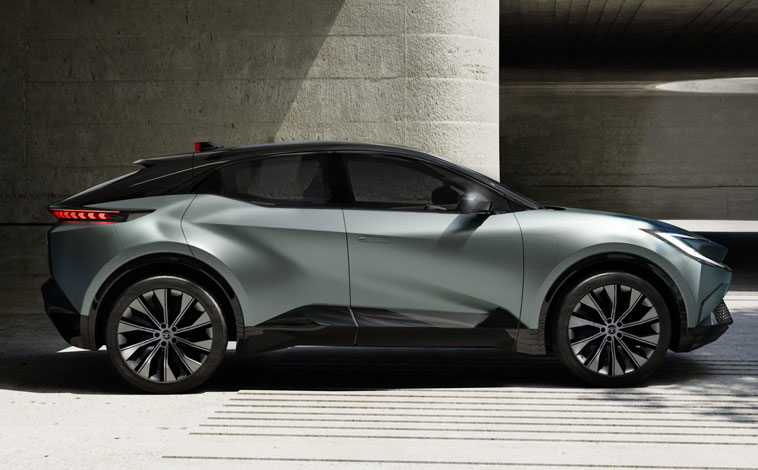
A look at Toyota’s electric concept SUV
The Toyota bZ Compact SUV Concept has made its European debut, giving a [...]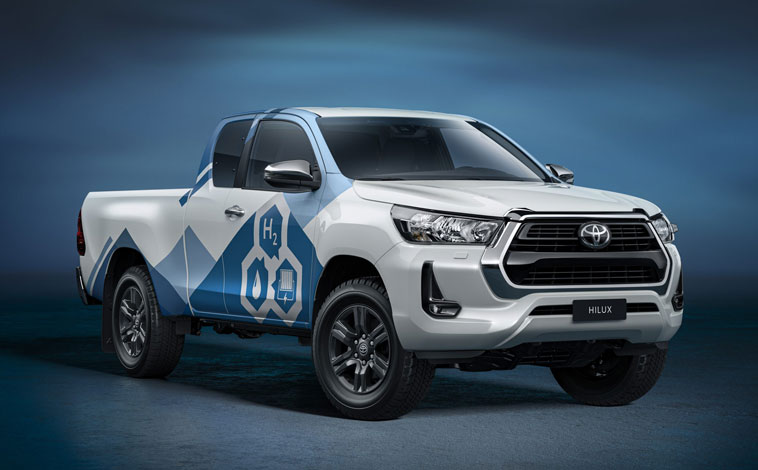
A hydrogen-powered Toyota pick-up
D2H Advanced Technologies is working as part of a consortium of leading British [...]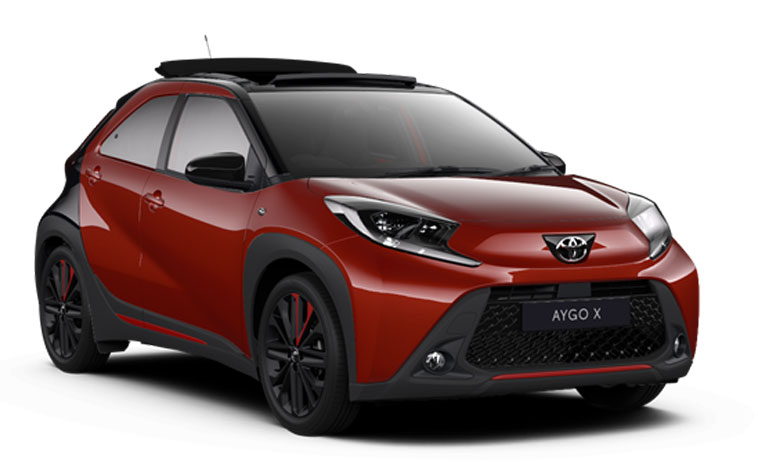
Open-top fun with new Aygo X model
Aygo X, Toyota’s muscular mini-SUV, opens up to the great outdoors with a [...]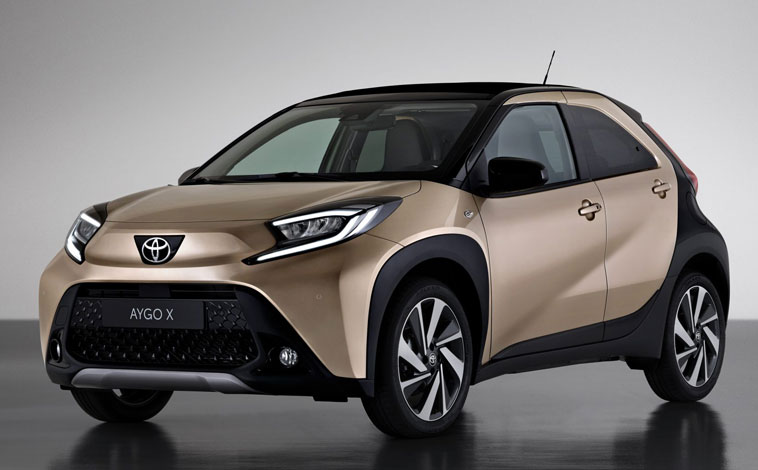
Introducing the striking Toyota Aygo X
Hot on the heels of its world premiere, the all-new Toyota Aygo X [...]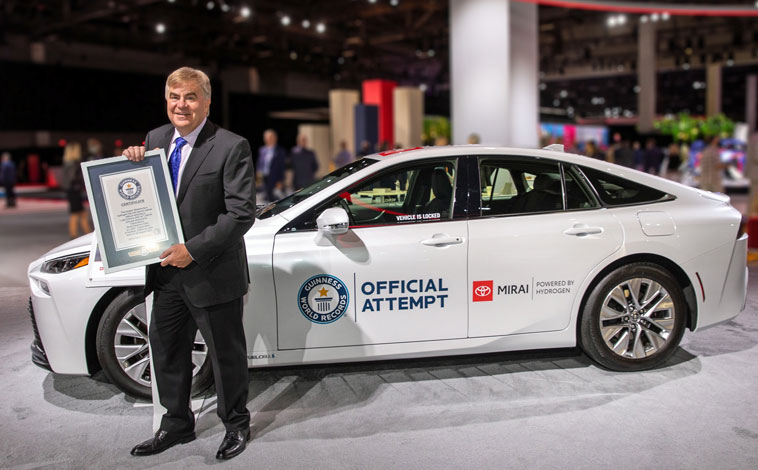
Toyota Mirai sets a new world record
The new Toyota Mirai has set an official Guinness World Records title for [...]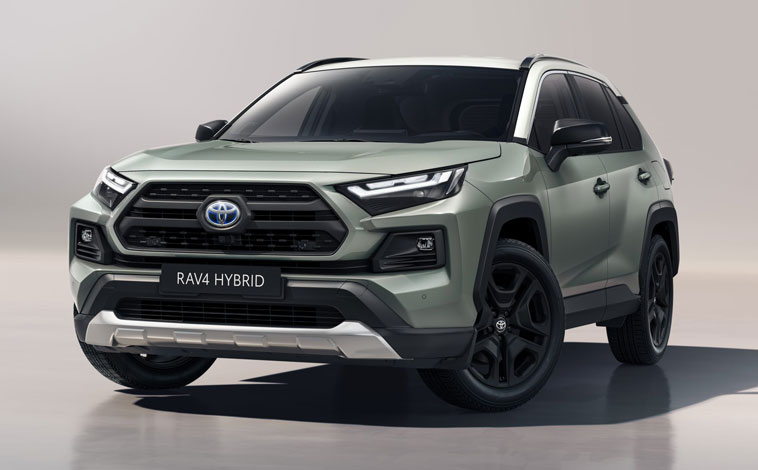
Toyota RAV4 goes on an Adventure
Toyota is widening the authentic SUV appeal of the RAV4 with the introduction [...]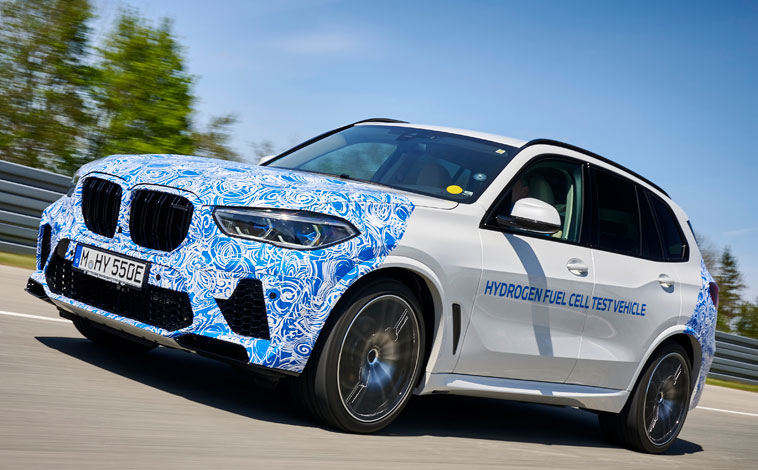
BMW begins hydrogen fuel cell testing
The BMW Group is beginning to test near-standard vehicles with a hydrogen fuel [...]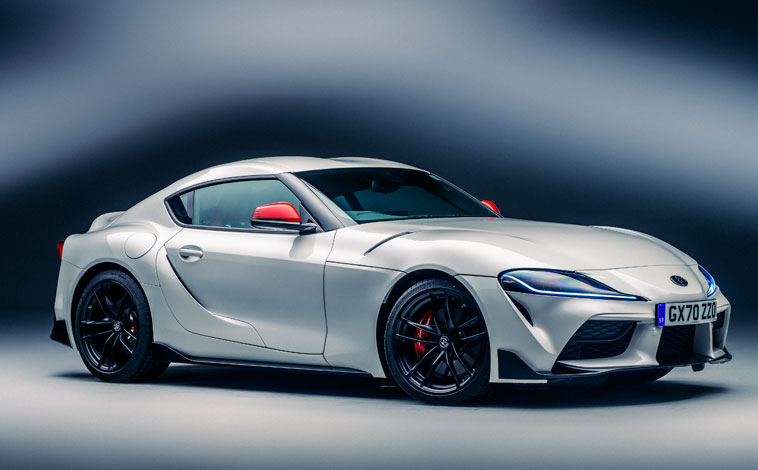
Toyota extends its Supra model line-up
Toyota’s GR Supra performance coupe line-up is growing with the introduction of a [...]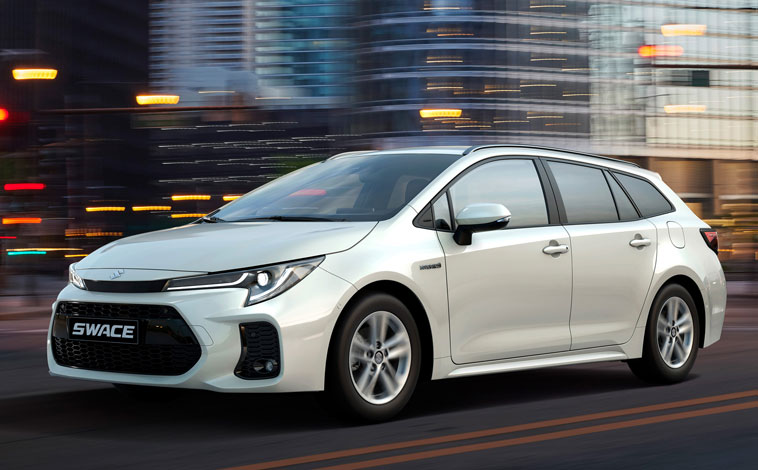
Suzuki unveils its first UK estate car
Suzuki has announced that its second new model in collaboration with Toyota is [...]Toyota announces details of new Hilux
Following the pricing for the Invincible and Invincible X Hilux models which have [...]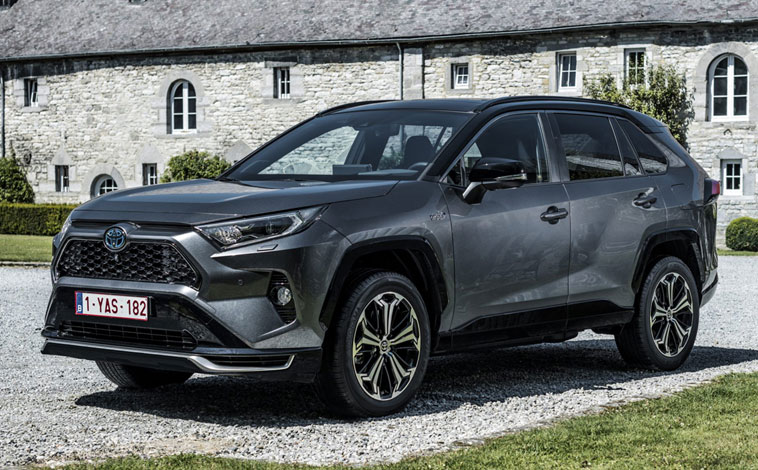
Toyota powers in with new plug-in RAV4
Toyota’s plug-in hybrid RAV4 will be the most powerful version of the ever-popular [...]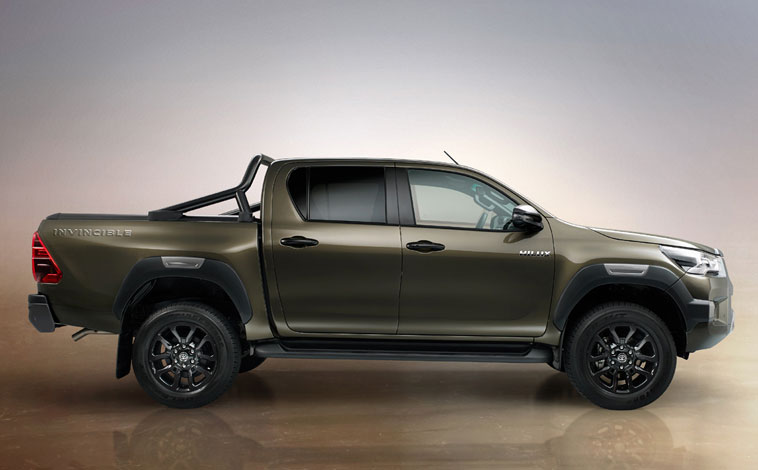
Toyota Hilux gains extra power and kit
Toyota’s mighty Hilux pick-up truck is gaining added appeal thanks to a more [...]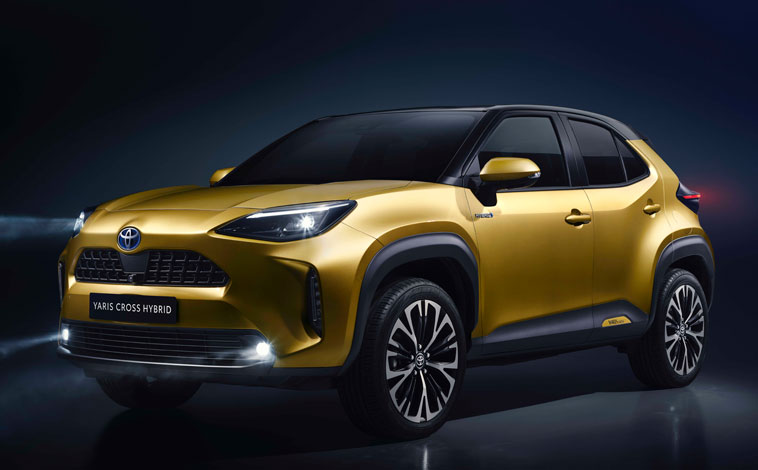
Toyota gives its Yaris the SUV treatment
Toyota has unveiled pictures of the all-new Yaris Cross, a compact, authentic SUV [...]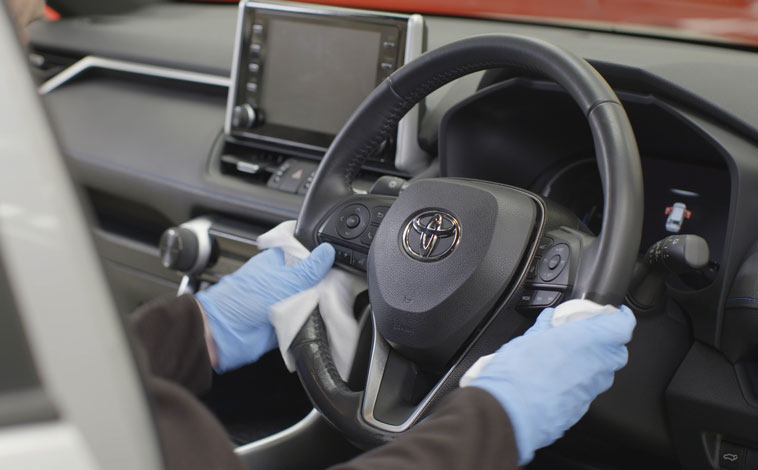
How to keep your car free from germs
With domestic hygiene high on the agenda right now, it’s important to remember [...]


